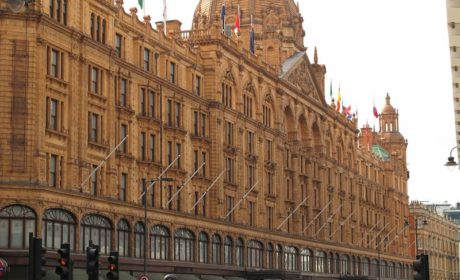Is a trip to London on your travel bucket list? Are you a fan of history? Combine the two with our tips for the best things to do in London for history lovers.
My Itchy Travel Feet featured writer, Debi Lander of ByLanderSea, takes you on an historical London tour that also includes a couple of day trips outside the city. Come along to discover the rich look at history that a trip to London provides.
London, the largest city in Europe, is home to about nine million people, a far cry from London town, a name used for the city during the Middle Ages. The Romans founded London, Capital of England, in the first century.
The city has been the principal residence of British monarchs for over a thousand years. That’s a lot of history!
Tourists come to explore London’s rich history, iconic landmarks, and world-class museums, but the city also ranks as an important commercial center. London’s contributions to developing parliamentary democracy, industrialization, and scientific innovation are significant.
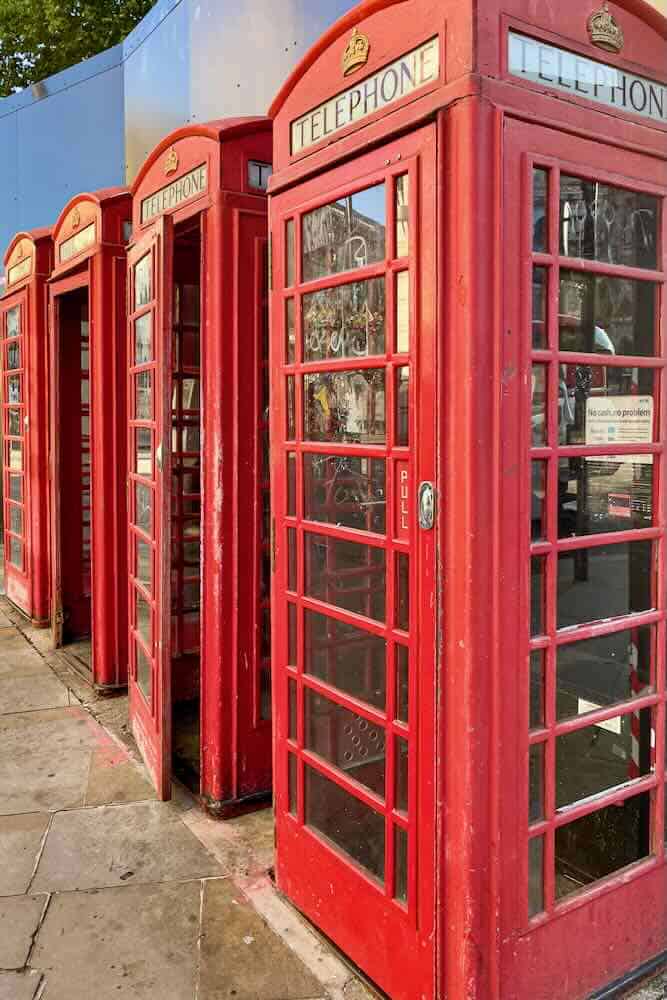
London is an ideal choice if you are planning a first trip outside of the United States. English is the spoken language, though you may hear some unusual British accents.
Public transportation is easily accessible, and dining should not be a problem. Stop into a pub for fish and chips and a pint. Crossing a street, however, requires concentration as vehicles drive on the opposite side of the road compared to most other countries.
Table of Contents
Best things to do in London for history lovers
London offers so much to see and do that more than one visit is needed, but here are the top historical sites to consider putting in your itinerary. I recommend three to four days minimum to take in all the historical things to do in London.
Boomer Travel Tip
MedjetAssist Members who are hospitalized 150 miles from home receive medical transport to a home-country hospital of choice. Memberships from $99.
Tower of London
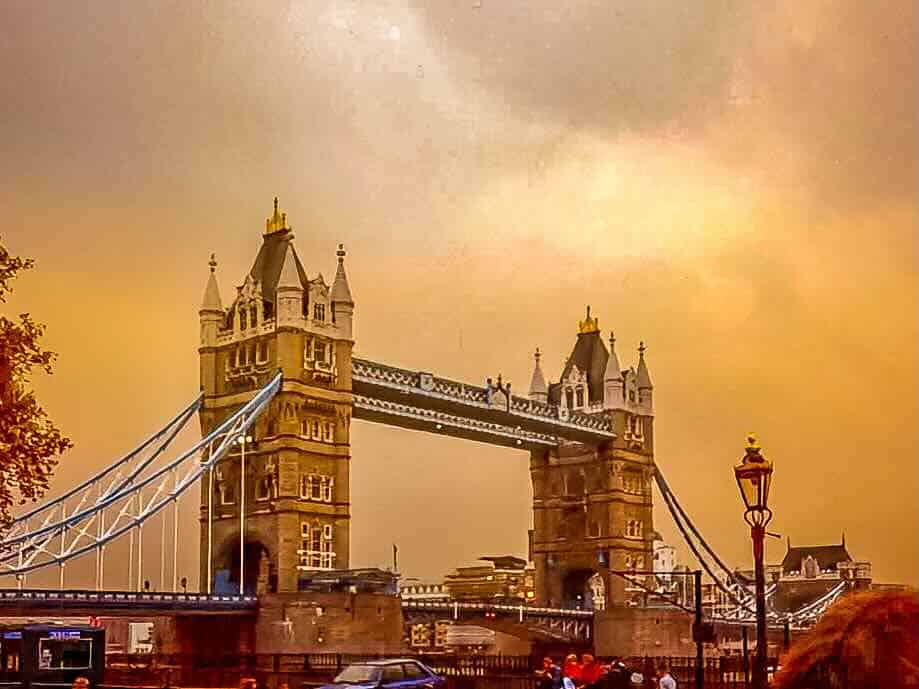
I’d start with the Tower of London (website), where guides, known as Yeoman Warders or Beefeaters, escort tours (purchase tickets in advance). These marvelous storytellers know their stuff and not only inform but entertain as well. You will leave with a better sense of English history.
The historic fortress rests on the north bank of the Thames River in central London. Initially built by William the Conqueror in the 11th century as a royal palace and a defensive stronghold, it has since played a significant role in English history.
The White Tower is the oldest part of the Tower complex and likely the image you carry in your mind. Standing since the 11th century, it now houses a gleaming medieval armor and weaponry collection.
The Medieval Palace is a series of buildings used as royal lodgings from the 13th to the 16th centuries. Visitors can see the king’s and queen’s apartments, the Great Hall, and other historic rooms.
Look for ravens (large birds) that have lived at the Tower for centuries. According to legend, the kingdom will fall if the ravens ever leave the Tower. Their wings are clipped to ensure that they stay.
Many famous figures, including Anne Boleyn and Catherine Howard, lost their heads in the grassy area known as Tower Green. Visitors look upon the site where these executions occurred and learn about the Tower’s dark history.
When you visit the Bloody Tower, you hear and learn about the mysterious disappearance of the two princes, sons of Edward IV. Most believe Richard III was responsible.
Everyone wants to see the fabulous and priceless Crown Jewels, a collection of royal regalia used by the English monarchs for centuries. An underground vault ensures their safety, and onlookers follow a moving path for an up-close view of the gem-studded crowns, scepters, and other ceremonial objects in the Jewel House.
A first visit to the Tower of London takes a minimum of a half day and includes a lot of walking and stairs. Plan to arrive early, when it opens, for the fewest crowds.
Check the online sites for ticket options, including skip-the-line tickets. If you are going during the busy season, purchase your tickets ahead.
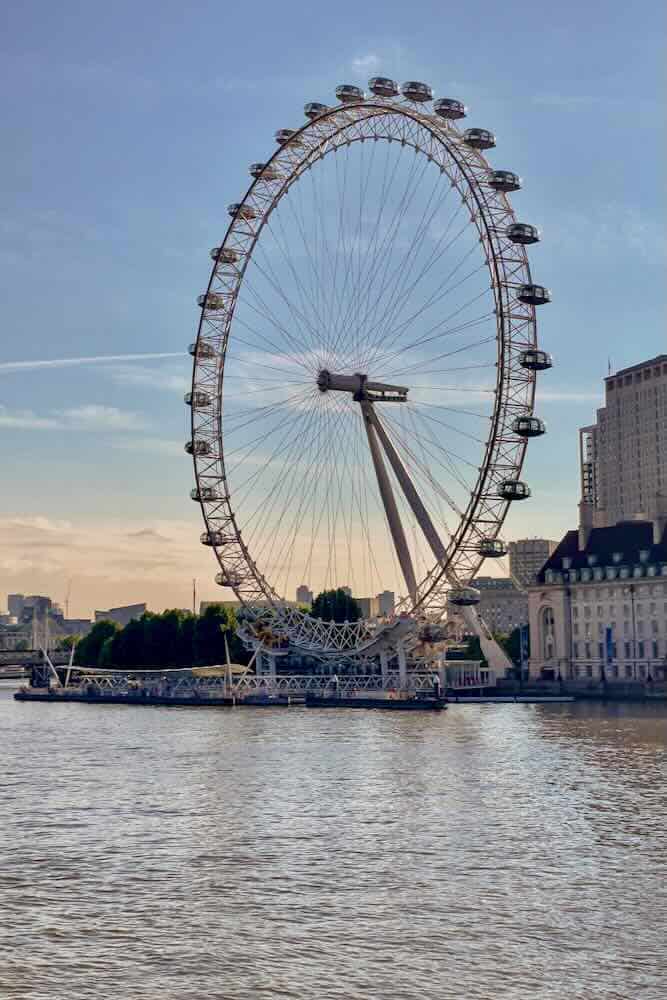
Afterward, consider a rest while taking a boat ride on the Thames. This ride affords a good look at Tower Bridge and moves you toward the London Eye. The Eye, a giant Ferris wheel on the South Bank, offers stunning views of the city skyline.
Ceremony of the Keys
One of my most memorable experiences in London was attending the London Tower’s evening Ceremony of the Keys.
The sentry calls out, “Who goes there?”
The Yeoman Warder (with the keys) answers, “The keys.”
“Whose keys”?
“King Charles’ keys.
“Pass then.”
This 700-year-old tradition of locking up the Tower for the night continues today. Once the big doors are locked, you exit through a smaller door within the big door. If you wait until the last person leaves, you’ll hear the bolts securing the entrance. (FYI – The Yeomen Warders live within the Tower grounds.)
You must book tickets for the Keys ceremony online (here), as far as possible ahead of your visit. The ceremony always sells out.
Boomer Travel Tip
In today’s travel climate, trip insurance is a must. Compare policies and rates at InsureMyTrip.
Westminster Area: Big Ben, Parliament, and Westminster Abbey
The next must-see attractions are Big Ben and the Houses of Parliament.
Big Ben
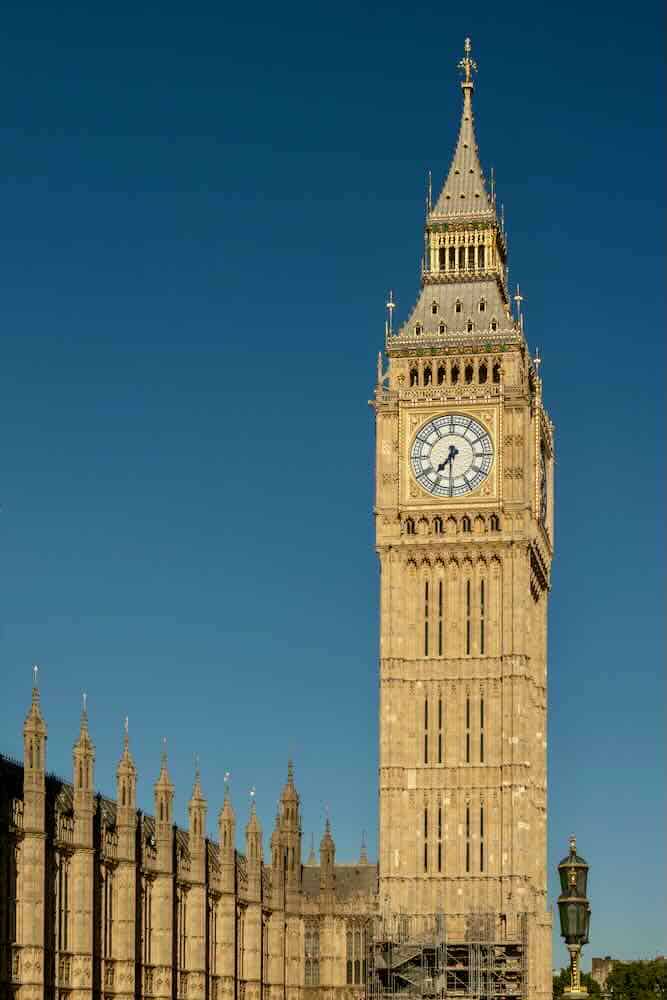
Big Ben never fails to impress with its iconic clock tower and majestic presence. Workers repainted it for the Queen’s Jubilee in 2022. Most folks view the exterior, take photos, and move on to Westminster Abbey.
Westminster Abbey
Westminster Abbey (purchase tickets in advance) was founded in the 11th century by Edward the Confessor to create a great church dedicated to St. Peter. Since then, the abbey has been the coronation church for English Kings and Queens. It has also been the site of many royal weddings and funerals and a resting place for numerous famous figures.
Gothic architecture soars with arches, vaulted ceilings, and intricately sculpted figures. The abbey’s iconic west front, undoubtedly familiar to many, features a large rose window and two towers.
Inside, you’ll also see ornate tombs, memorials around the sanctuary. There’s also a high altar adorned with gold and silver.
When you arrive at Westminster Abbey, sign up for a 90-minute Verger Tour led by cathedral guides. This guided tour includes visiting the Shrine of St Edward the Confessor (not open to general visitors), the royal tombs, Poets’ Corner, the Lady Chapel, and the Nave. Check the website for times.
Buckingham Palace
If your feet are up for a walk (easily doable when not exhausted), proceed toward St. James Park. This way leads to the Mall (a tree-lined avenue connecting the Palace and Trafalgar Square) and the gates of Buckingham Palace. The Palace remains the official residence of the monarch since Queen Victoria.
It was opened to visitors for the first time in 1993 to raise money to repair the fire damage to Windsor Castle. Tours of the State Rooms continue today, but you’ll need reservations for timed entry tickets. Purchase tickets in advance here.
The Changing of the Guard ceremony is free but does not happen daily. In all honestly, I would skip it.
Trafalgar Square
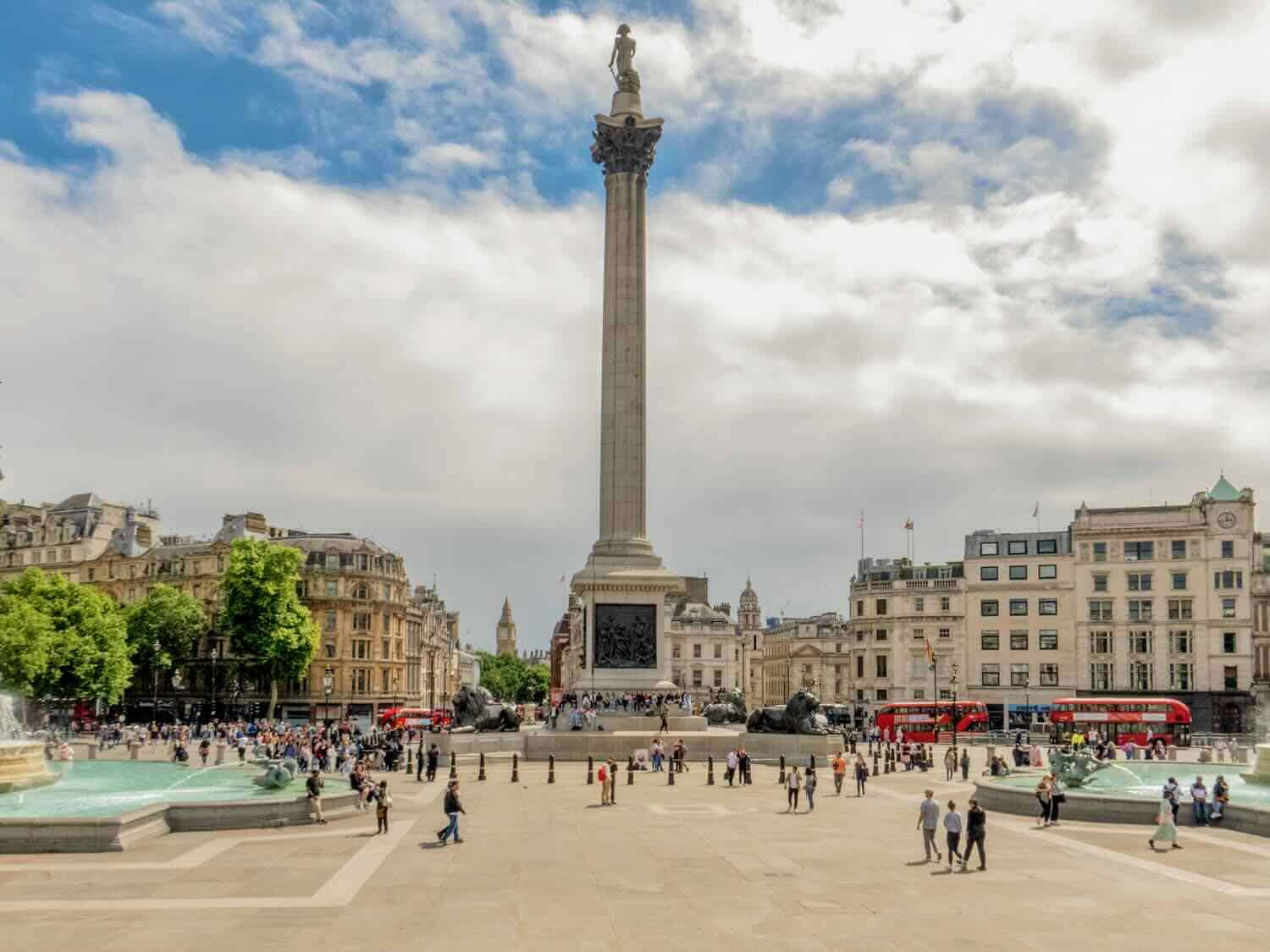
Trafalgar Square rests right at the heart of the city. It’s a busy public crossroads and space adorned with historical statues, fountains, benches, and often hosts live events.
A granite column rises from the center of the plaza with a statue of Lord Nelson on the top. The square’s name refers to Lord Nelson’s naval victory (1805) in the Battle of Trafalgar. Massive statues of lions sit at the base.
National Gallery
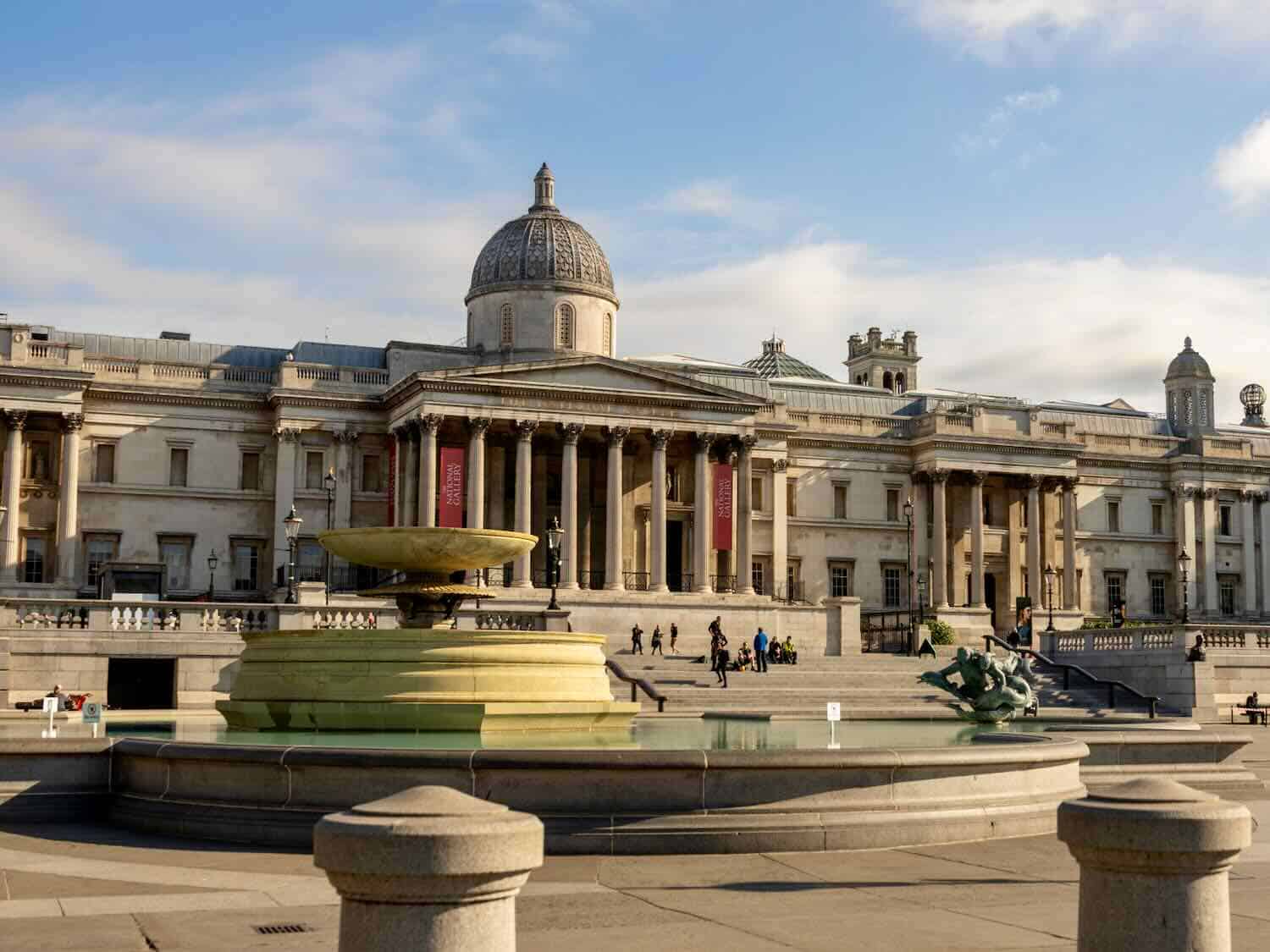
The National Gallery, London’s leading art museum, houses a collection of 2,300 paintings from famous artists like Van Gogh, Rembrandt, Vermeer, Degas, and Leonardo da Vinci. I recommend studying a gallery guide and choosing the artworks you want to see instead of just wandering through the massive museum.
Entrance is free, although you can book a tour and pay for an audio guide. The gift shop is excellent.
Churchill War Rooms
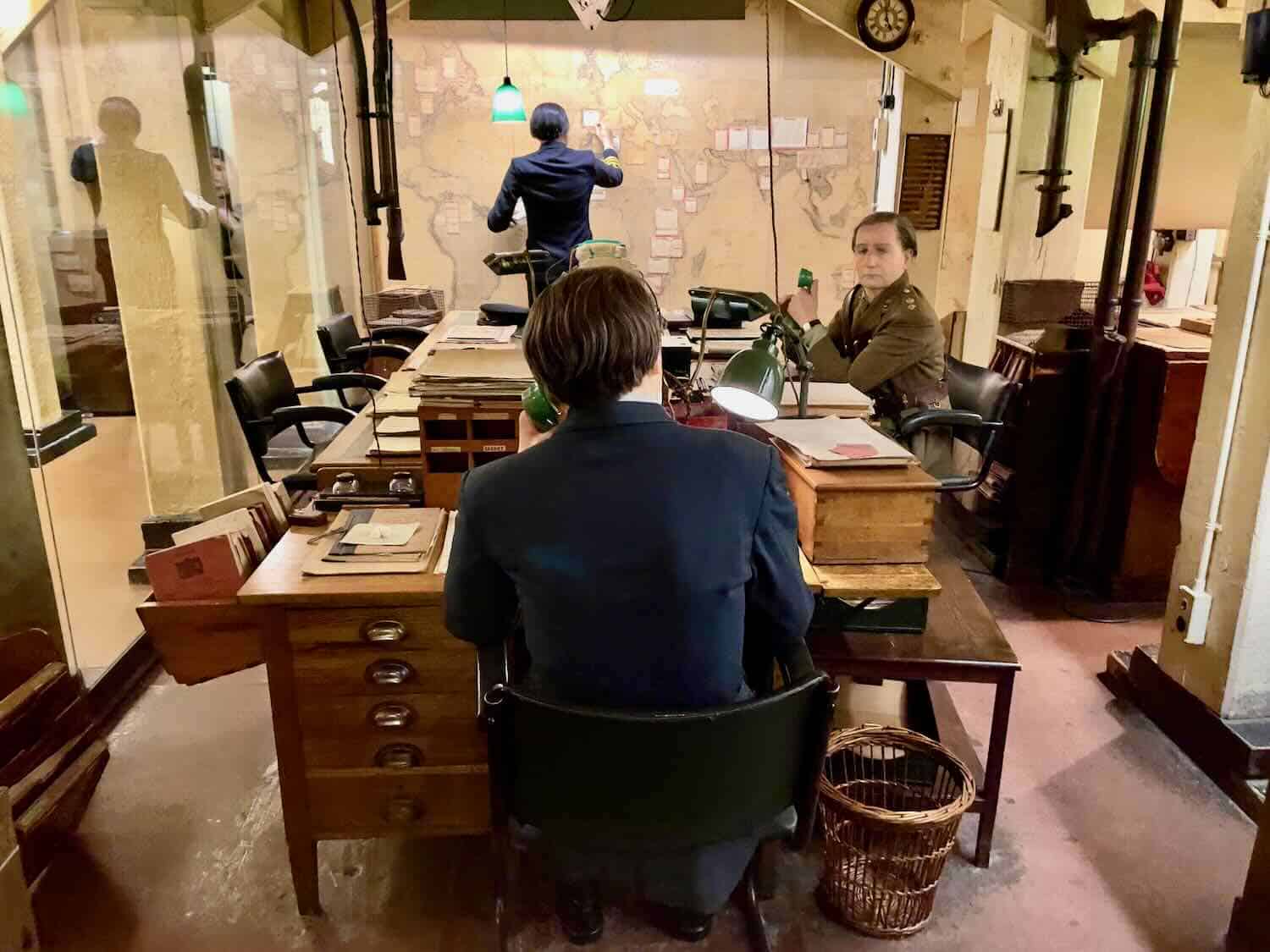
The Churchill War Rooms, one of the Imperial War Museums, will likely appeal to boomer travelers and history buffs. Proceed to the historic underground complex located across from St. James Park. The war rooms were built in the late 1930s and served as the British government’s command center during the Second World War.
You follow through a maze of corridors and rooms, including the Cabinet War Rooms, where Winston Churchill and his key advisers met to make crucial decisions. The Map Room, restored to its original state, includes detailed maps that tracked military operations worldwide.
The tour ends up in the Churchill Museum, which tells the story of Churchill’s life and consists of much memorabilia and videos. You will likely spend two hours inside, but real history buffs will take longer or book an in-depth private tour.
British Museum
Don’t miss the British Museum (it’s free), even if you only see its prized possessions: the Rosetta Stone – an etched slab that helped scholars to decipher Egyptian hieroglyphs; the Elgin Marbles- reliefs from the Parthenon in Athens, Greece; the Egyptian collections including mummies.
The Sutton Hoo Treasure is another of the museum’s prized collecitons. This group of Anglo-Saxon artifacts discovered in a burial mound in Suffolk, includes a helmet, shield, and other items dating back to the 7th century. (These are the artifacts featured in the movie The Dig.)
Also popular are the Lewis Chessmen, a set of 12th-century chess pieces carved from walrus ivory. They were discovered on the Isle of Lewis in Scotland and are considered one of the most significant medieval artifacts in the British Museum’s collection.
Make the most of your British Museum experience by booking a private tour.
Victoria and Albert Museum
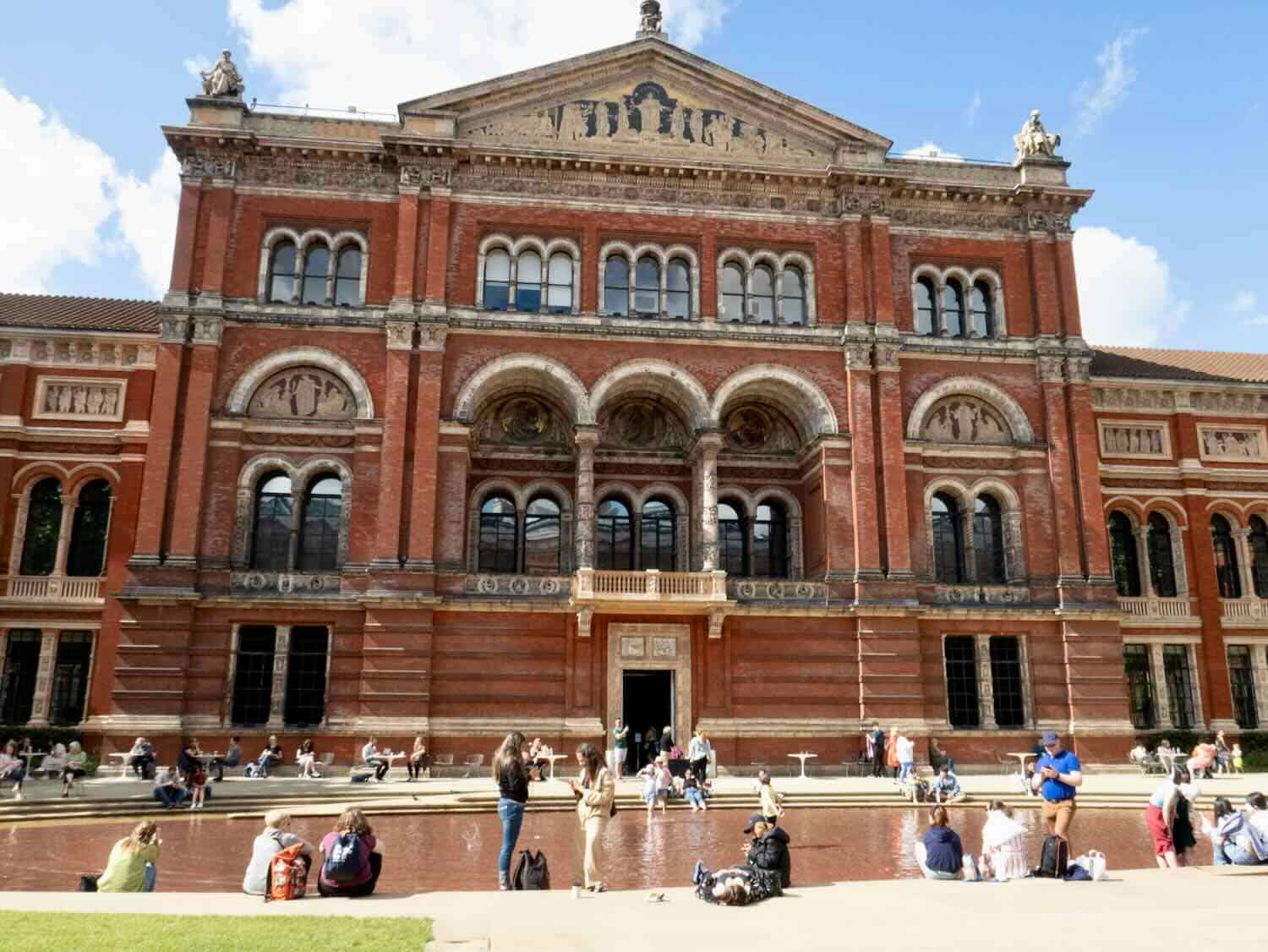
The Victoria and Albert Museum is the world’s largest decorative arts and design museum. The must-see exhibits for visitors start with the Cast Courts. They house the most extensive collection of casts (copies) of sculpture and architectural features worldwide, including Trajan’s Column and Michelangelo’s David.
It’s like walking through the most remarkable global sculptures, all in one place. Outstanding!
The British Galleries showcase the history of British art and design from the Tudor period to the present, featuring furniture, textiles, ceramics, and more.
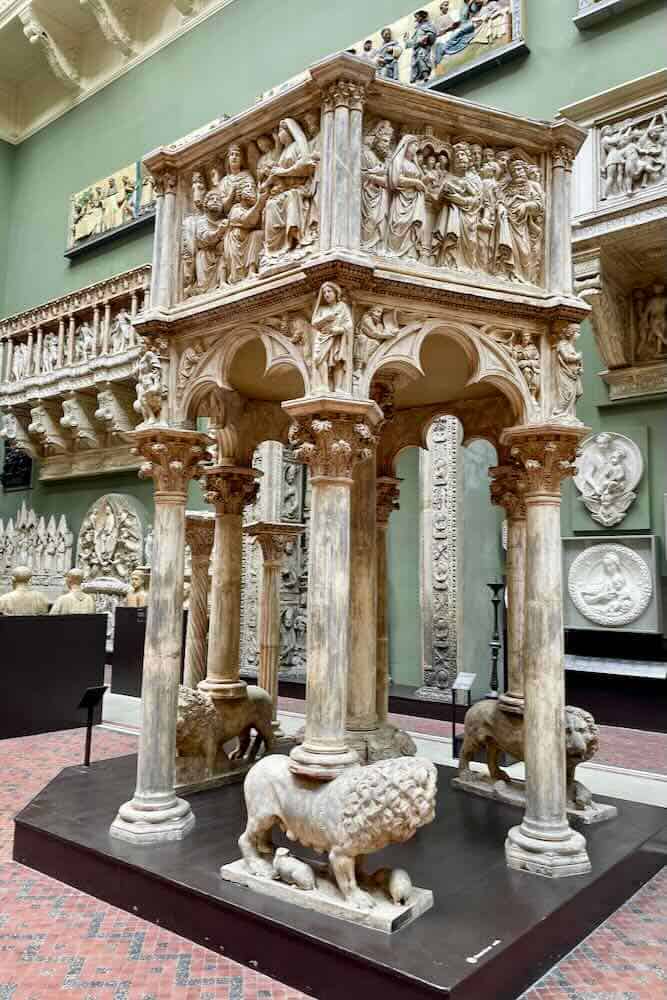
The Fashion Galleries display over 500 years of fashion history, with costumes and accessories from around the world. The Jameel Gallery of Islamic Art displays a stunning collection of Islamic art and artifacts from the Middle East, Central Asia, and North Africa.
I could spend days in this fascinating museum, which also offers a fabulous gift shop. Consider a private tour to make the most of your time at Victoria and Albert Museum.
St. Paul’s Cathedral
St. Paul’s Cathedral, an important religious site, is a masterpiece of baroque architecture, constructed after the great fire from 1675 to 1720. If you get the chance, climb to the Whispering Gallery to look down upon the cathedral’s interior. Then, climb up to the dome for some stunning city views.
Please be forewarned that the climb involves many steps, can be physically demanding, and even a bit scary. (But, in my opinion, worth it.) Here’s how to purchase a ticket to St. Paul’s Cathedral in advance.
Tate Modern Museum
The Tate Modern Museum (official website) has a vast permanent collection of modern art by Henri Matisse and Jackson Pollock and temporary exhibitions. Enjoy the scenic views looking back on St. Paul’s Cathedral and the River Thames. Here’s how to book a private guided tour.
Globe Theater
The nearby Globe Theater is a replica of Shakespeare’s original which burned in a fire many years ago. The thatched roof ignited during a production of Henry VIII.
Dinner and a Show at the West End
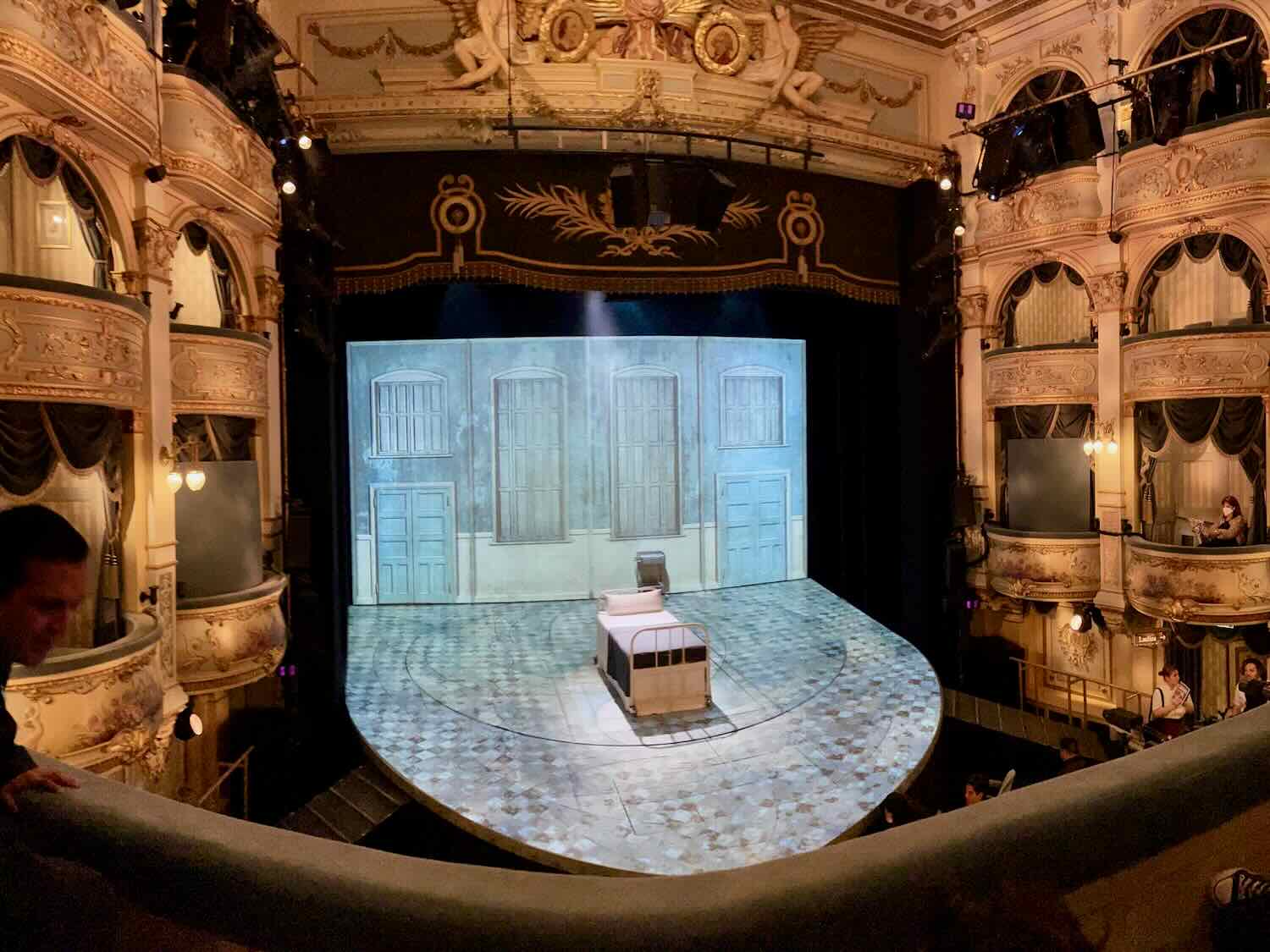
Head to the historic West End, where London’s theater district presents world-class performances of musicals, plays, and operas. Since 1663, thespians have practiced their craft in West End theaters. And a night of theater will cost less than those in New York.
Nice extras for the London history buff – If you have time
- The British Library is one of the largest libraries in the world and is home to important manuscripts, including the Magna Carta and original Beatles lyrics.
- Shop at Harrods, one of the most famous department stores in the world. Its motto, Omnia Omnibus Ubique, is Latin for “all things for all people, everywhere.” And it has everything!
- Visit Madame Tussaud’s famous wax museum.
- Ride a red double-decker bus. Buy your ticket in advance.
- Stop for a photo at one of the old red phone booths.
- Stroll past 10 Downing Street, home of the Prime Minister.
- A day trip to Windsor Castle or Hampton Court. Trains run from London to both historic sites. You’ll reach the entry points from their respective train stations in just a few minutes on foot.
Day trip to Windsor Castle
If you are a royalist or fond of castles like the ones I saw on my Scotland road trip, make a day trip out of London to see Windsor Castle. It’s one of the oldest and largest inhabited castles in the world.
Windsor Castle, a royal residence for over 900 years, has been home to many monarchs, including Henry II, Elizabeth I, and Queen Victoria. It was also the site of many important historical events, such as the signing of the Magna Carta in 1215. The castle was restored to its former glory after the terrible 1992 fire.
Visitors can explore the castle’s State Apartments, filled with historical art and furniture, and St. George’s Chapel, the final resting place of many monarchs, including King Henry VIII and Queen Elizabeth I and II. I loved Queen Mary’s dollhouse, which runs a lot bigger than you’d expect.
Windsor Castle is also the site of many royal ceremonies, including the Order of the Garter ceremony and the changing of the guard (better here than at Buckingham Palace). Make the most of your time by booking a private day trip to Windsor Castle from London.
Day trip to Hampton Court
Hampton Court Palace is the epitome of Tudor history, featuring Henry VIII and his royal court. The Palace creates an experience that reveals the inner workings of the Palace in Tudor times. The gardens behind the mansion include a maze. Consider touring with a private guide once you arrive at Hampton Court.
Purchase a London Pass
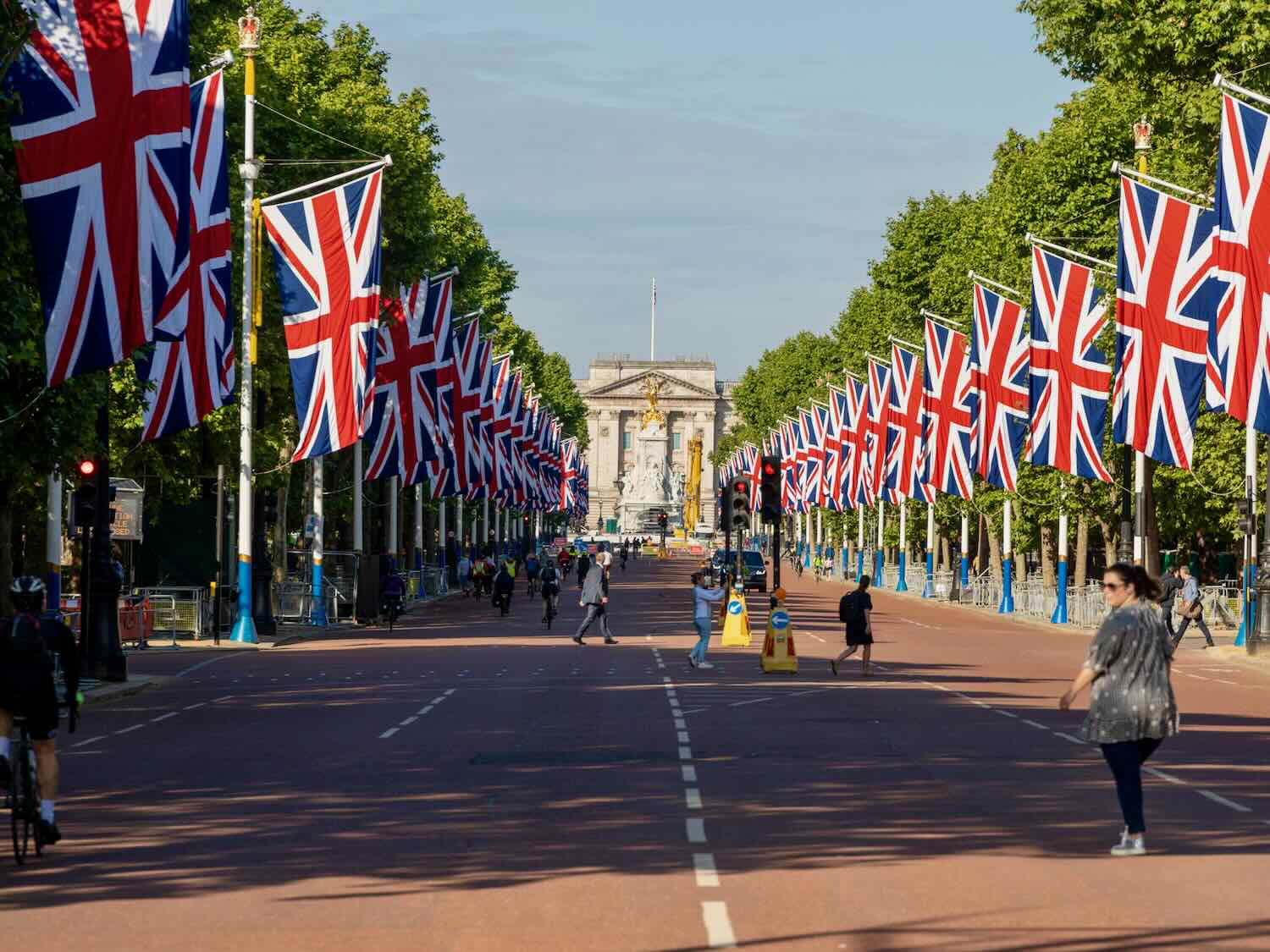
London tourists should explore the London Pass to save money on attraction entrance fees. Purchase access to over 80+ London attractions here.
Where to stay in London
Hotel choices in London are plentiful but expensive. I suggest comparing locations and rates with those of rental properties. However, if your budget can afford a splurge, The Londoner would be my choice.
The Londoner features oversized luxury rooms, outstanding restaurants, and the best location in town. Guests can walk two blocks to Trafalgar Square and the National Art Gallery.
Turn the corner, and you’ll find Admiralty Arch and St. James Park. Continue until you come to Big Ben, Parliament, and Westminster Abbey. Head in the opposite direction and step into the theatre district and Chinatown.
The Londoner acts as the core to the heart and art of London.
Arrival into London – Heathrow Express
The Heathrow Express becomes a quick and efficient way to get into the city from Heathrow Airport. The train leaves every 15 minutes and arrives at Paddington Station about 15 minutes later. It is the way to go if you can easily manage your luggage. You can hire a taxi to take you to your hotel at the station.
Book your tickets online or by using the Heathrow Express App. Not only will this save you a hassle at the airport, but you’ll also save money. Heathrow Express prices are lower the further you book in advance.

